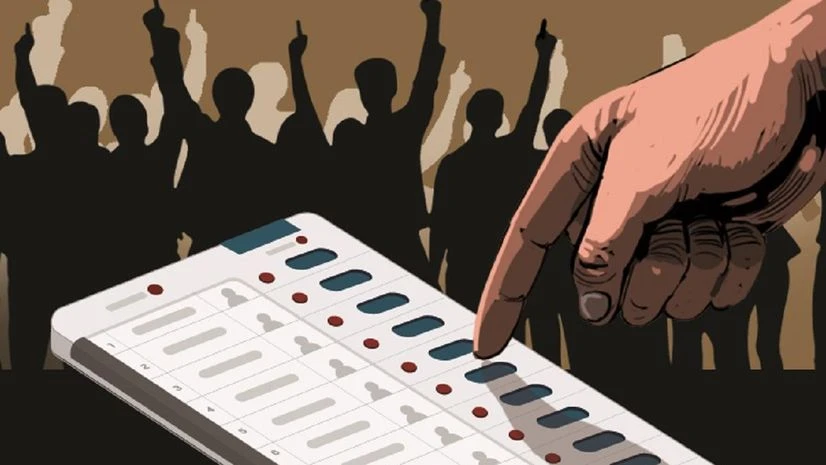)
ILLUSTRATION: AJAY MOHANTY
In a significant move towards electoral reform, the Union Cabinet on Wednesday approved the proposal to conduct simultaneous elections for the Lok Sabha, state Assemblies, and local government bodies. This decision follows the recommendation of the high-level committee on One Nation, One Election, chaired by former President Ram Nath Kovind.
The Kovind Committee’s report, submitted to President Droupadi Murmu on March 14, proposed several constitutional amendments to synchronise elections at the central, state, and local levels. According to Union Minister Ashwini Vaishnaw, the implementation will happen in two stages: the first phase will align Lok Sabha and state Assembly elections, with local body elections integrated in the second phase, scheduled to follow within 100 days.
The road ahead
The ‘One Nation, One Election’ initiative depends on the passage of two critical constitution amendment bills in Parliament, necessitating widespread support across political parties. Given that the Bharatiya Janata Party (BJP) lacks a majority on its own in the Lok Sabha, building a consensus will require engaging with both allies in the National Democratic Alliance (NDA) and Opposition parties.
One possible approach to secure this consensus involves referring the Bills to a parliamentary committee — either a standing committee or a joint parliamentary committee. These committees, composed of members from various political factions, will deliberate on the proposals, potentially leading to a collective agreement.
In addition to parliamentary consensus, the Centre must also collaborate with state governments. The Constitution mandates that any amendment affecting local government elections requires ratification by at least half of the country’s states. While the BJP governs more than a dozen states, upcoming Assembly elections in Haryana, Maharashtra, and Jharkhand could alter the current political landscape, impacting the likelihood of ratification.
The changes required
The transition to a simultaneous election system necessitates comprehensive constitutional changes. The first Constitution Amendment Bill will introduce the framework for holding simultaneous elections for the Lok Sabha and state Assemblies. Under Article 368 of the Constitution, this amendment requires a ‘special majority’ — meaning more than half of the total membership of both the Lok Sabha and Rajya Sabha must vote in favour, with a two-thirds majority of those present and voting.
A second Constitution Amendment Bill will address the integration of local body elections into the simultaneous election process. Since ‘local government’ is a subject listed under the State List in the Seventh Schedule, only state governments possess the authority to legislate on this matter. To include local elections in the simultaneous framework, the amendment must not only achieve a ‘special majority’ in Parliament but also be ratified by at least half of the state legislatures.
The transition timetable
Should Parliament pass these Bills, the transition to simultaneous elections will commence with a notification issued by the President during the first sitting of the Lok Sabha following a general election. This notification will introduce Article 82A, a new provision facilitating the alignment of election schedules.
States whose Assemblies are elected post the ‘appointed date’ will see their terms adjusted to end alongside the Lok Sabha’s term. This process may necessitate the early dissolution of some state Assemblies. For instance, the Bihar Assembly, scheduled for elections in October or November 2025, will face dissolution in 2029, aligning with the Lok Sabha elections that year, rather than in 2030 as per the current five-year term.
In the event of an early dissolution of a state Assembly or the Lok Sabha, ‘mid-term’ elections will be held. However, the tenure of these newly elected bodies will only extend until the next scheduled simultaneous elections. This interim period will be referred to as the ‘unexpired term’.
The deferment guidelines
In cases where the Election Commission of India determines that state Assembly elections cannot be conducted simultaneously, it can recommend to the President a deferment of the election to a later date. Nevertheless, subsequent elections for that Assembly will align with the Lok Sabha and other state Assembly elections.
To streamline the electoral process, the Kovind Committee has proposed a ‘single electoral roll’ for every territorial constituency across national, state, and local levels. This comprehensive voter list will be developed in consultation with the State Election Commissions and will necessitate ratification by half of the country’s states.
First Published: Sep 19 2024 | 11:19 AM IST

































